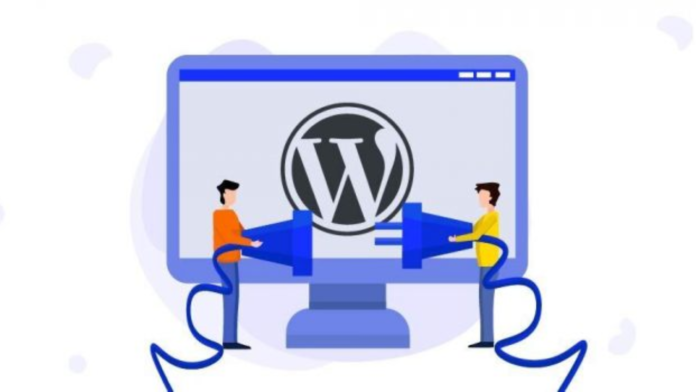Introduction
Definition of WordPress Plugin Development
WordPress is a popular content management system (CMS) used to create and manage websites. A plugin is a piece of software that adds specific functionality to a website built on WordPress. WordPress Plugin Development refers to the process of creating and customizing these plugins.
A WordPress plugin is essentially a set of PHP code files that can be installed and activated within a WordPress site to extend its functionality or add new features. Plugins can be created for a variety of purposes, such as improving site performance, adding social media integration, implementing e-commerce functionality, or providing a custom user interface.
Importance of Learning WordPress Plugin Development
Learning WordPress plugin development is important for several reasons:
- Customization: WordPress plugins allow you to customize your website or blog as per your needs. You can add new functionalities, features, and tools to your site that may not be available in the core WordPress software.
- Flexibility: Plugins offer a flexible solution to extend the capabilities of WordPress. They can be easily installed, activated, deactivated, and deleted based on your requirements. You can also modify existing plugins or create new ones as per your needs.
- Cost-effective: Developing your own WordPress plugin can be a cost-effective solution to meet your specific needs, compared to hiring a developer to build a custom solution from scratch.
- Career growth: Learning WordPress plugin development can open up new career opportunities, especially if you are interested in web development or software engineering. As WordPress powers a significant portion of the internet, there is a huge demand for skilled WordPress developers.
- Contribution to the WordPress community: WordPress is an open-source platform, and plugins play a crucial role in extending its capabilities. By learning WordPress plugin development, you can contribute to the WordPress community by creating plugins that can benefit other users.
Overall, learning WordPress plugin development can be a valuable skill that can enhance your website, career, and contribution to the WordPress community.
Understanding the Basics of WordPress Plugin Development
WordPress is a powerful and flexible platform that allows users to create websites and blogs. One of the great features of WordPress is its ability to extend functionality through plugins. If you are interested in WordPress plugin development, here are some basics to get started:
1. Understand the WordPress Plugin Architecture:
A WordPress plugin is a piece of software that adds new functionality to WordPress. It is a standalone software module that interacts with WordPress core functions and adds new features. WordPress has a well-defined plugin architecture that allows developers to create, modify, and extend functionality without modifying the core code.
2. Choose a Development Environment:
You will need a development environment to create and test your WordPress plugins. You can either use a local development environment on your computer or use a remote development environment.
3. Learn the WordPress Plugin API:
The WordPress Plugin API provides a set of functions, hooks, and filters that can be used to interact with WordPress core functions and add new features. You can use these APIs to create custom post types, add new menus, create custom widgets, and much more.
4. Write Your Plugin Code:
Once you have an understanding of the WordPress plugin architecture and the Plugin API, you can start writing your plugin code. You can use any programming language that can interact with WordPress, but the most common language used for WordPress plugin development is PHP.
5. Test Your Plugin:
After writing your plugin code, you need to test it thoroughly to make sure it works as expected. You can test your plugin on your local development environment or on a remote development environment. You can also use WordPress debugging tools to identify and fix any errors in your code.
6. Publish Your Plugin:
Once you have tested your plugin, you can publish it on the WordPress plugin repository or distribute it through other channels. You will need to follow the guidelines and best practices for publishing plugins to ensure that your plugin is secure, stable, and meets the WordPress standards.
Setting Up Your Development Environment
Setting up your development environment depends on what programming language, framework, or tool you will be using. However, here are some general steps that you can follow:
1. Choose your operating system:
Some programming languages and tools work better on certain operating systems. For example, macOS is commonly used for iOS development, and Windows is commonly used for .NET development.
2. Install a text editor or an IDE:
A text editor is a lightweight tool that allows you to write code, whereas an Integrated Development Environment (IDE) is a more comprehensive tool that includes a text editor, a debugger, and other features to make coding easier. Popular text editors include Visual Studio Code, Sublime Text, and Atom, while popular IDEs include Eclipse, IntelliJ IDEA, and Visual Studio.
3. Install the required programming language(s) and tool(s):
You will need to download and install the programming language and tools required for your project. For example, if you are developing a web application using JavaScript, you will need to install Node.js, which is a JavaScript runtime. If you are developing an iOS application, you will need to install Xcode, which is an IDE for macOS that includes the Swift programming language and iOS SDK.
4. Install dependencies:
Some programming languages and frameworks rely on external libraries and packages to function. You will need to install these dependencies using a package manager such as npm (Node Package Manager) or pip (Python Package Installer).
5. Configure your development environment:
Some tools require configuration to work properly. For example, you may need to configure a database connection for your web application, or set up an emulator for your mobile application.
6. Test your development environment:
Once you have set up your development environment, test it by creating a simple “Hello World” application to ensure that everything is working as expected.
By following these steps, you should be able to set up your development environment and start coding. Remember to always refer to the documentation and seek help from the community if you encounter any issues.
Creating Your First WordPress Plugin
Creating a WordPress plugin can seem daunting at first, but with the right approach, it can be a fun and rewarding experience. Here are the steps to creating your first WordPress plugin:
1. Plan your plugin:
The first step in creating any plugin is to plan out what you want it to do. What functionality do you want to add to WordPress? What problem does your plugin solve? This planning process will help you to focus your development efforts and ensure that you create a plugin that meets your goals.
2. Set up a development environment:
To develop a WordPress plugin, you’ll need a development environment. You can use a local development environment like WAMP, MAMP, or XAMPP. Alternatively, you can use a cloud-based development environment like Cloud9, CodeAnywhere, or Koding. Make sure your development environment has the latest version of WordPress installed.
3. Create a new plugin directory:
Create a new directory in the WordPress plugins directory, located at wp-content/plugins. Give your plugin directory a unique name that describes what your plugin does.
4. Create a new PHP file:
In your plugin directory, create a new PHP file with the same name as your plugin directory. This file will be the main plugin file and will contain all the code for your plugin.
5. Add plugin header information:
At the top of your main plugin file, add a plugin header that contains information about your plugin, such as its name, description, author, version, and license.
6. Define plugin functionality:
Define the functionality you want to add to WordPress. This can include adding custom post types, custom taxonomies, shortcodes, widgets, and more.
7. Test and debug your plugin:
Test your plugin thoroughly to ensure that it works as intended. Use debugging tools like WP_DEBUG to troubleshoot any issues you encounter.
8. Publish your plugin:
Once your plugin is complete, publish it to the WordPress plugin repository or make it available for download on your website.
With these steps, you should be well on your way to creating your first WordPress plugin. Remember to keep your plugin simple, well-documented, and easy to use. Good luck!
Best Practices for WordPress Plugin Development
Here are some best practices for WordPress plugin development:
1. Start with a clear plan:
Before you start writing code, make sure you have a clear idea of what your plugin is going to do, what features it will have, and how it will work.
2. Follow WordPress coding standards:
WordPress has a set of coding standards that all plugins should follow. This helps ensure that your code is consistent, easy to read, and compatible with other plugins and themes.
3. Use hooks and filters:
WordPress has a powerful system of hooks and filters that allows you to modify the behavior of WordPress core, themes, and other plugins. Make use of these to ensure your plugin can integrate easily with other parts of the WordPress ecosystem.
4. Test your code thoroughly:
Make sure you test your plugin on different versions of WordPress, with different themes and other plugins installed. Also, test for performance, security, and compatibility issues.
5. Use clear and descriptive function and variable names:
Use function and variable names that accurately describe what they do. This makes your code easier to read and maintain.
6. Provide good documentation:
Write clear and concise documentation that explains how to install, configure, and use your plugin. Include examples and screenshots where appropriate.
7. Keep your code up to date:
Keep your plugin up to date with the latest version of WordPress and PHP. This helps ensure that your plugin remains compatible with other parts of the WordPress ecosystem.
8. Provide good support:
Be responsive to user feedback and bug reports. Provide good support by answering questions promptly and helping users troubleshoot issues.
By following these best practices, you can develop high-quality, reliable WordPress plugins that are easy to use and maintain.
Expanding Your WordPress Plugin Development Skills
If you’re looking to expand your WordPress plugin development skills, here are some tips:
1. Stay up to date with WordPress:
Make sure you’re always using the latest version of WordPress, as well as the latest version of any plugins or themes you’re working with. Stay informed about new features and updates so you can take advantage of them in your own plugin development.
2. Learn PHP:
PHP is the primary programming language used for WordPress development, so it’s essential that you have a good understanding of it. Take some time to learn the basics of PHP, and then move on to more advanced topics like object-oriented programming, database interaction, and security.
- Read the WordPress Plugin Developer Handbook:
The WordPress Plugin Developer Handbook is an excellent resource for learning about the WordPress plugin development process. It covers everything from creating your first plugin to more advanced topics like security, performance optimization, and plugin compatibility.
4. Use a Code Editor:
A good code editor can make your plugin development work much easier and more efficient. Consider using a code editor like Sublime Text, Visual Studio Code, or Atom to streamline your workflow.
5. Get Involved in the WordPress Community:
Joining the WordPress community can be a great way to learn from other developers, get feedback on your work, and stay up to date with the latest news and trends in WordPress development. Attend WordPress meetups and WordCamps, join online forums and discussion groups, and contribute to the WordPress core code if you can.
6. Use Best Practices:
Following best practices when developing your plugins is important for ensuring that your plugins are secure, efficient, and compatible with other plugins and themes. Some best practices to keep in mind include properly sanitizing user input, using nonces for form submissions, using the WordPress coding standards, and optimizing your plugin for performance.
7. Test, Test, Test:
Before releasing your plugin to the public, make sure you thoroughly test it to ensure that it works as expected and doesn’t cause any conflicts with other plugins or themes. Use a staging site to test your plugin in a safe environment, and consider using automated testing tools like PHPUnit or Codeception.
By following these tips, you can expand your WordPress plugin development skills and create high-quality plugins that enhance the WordPress ecosystem.








